The USS North Carolina (SSN 777) has arrived at HMAS Stirling, Western Australia, after its role in the Talisman Sabre 2023 exercises.
This event stands as the first instance of a Virginia-class submarine visiting Australia since the AUKUS Optimal Pathway announcement.
The AUKUS partnership, unveiled in September 2021, has its foundation in strengthening the defence capacities of the three countries and endorsing security within the Indo-Pacific region.
Regarding the recent visit, Mr. Abe Denmark, Senior Advisor for AUKUS to the Secretary of Defense, commented, “North Carolina’s presence in HMAS Stirling signifies the United States’ unwavering dedication to the AUKUS partnership. This begins with the pledged surge in SSN port visits to Australia in 2023.”
He emphasised that such visits pave the way for Australia to cultivate the imperative operational proficiencies needed to govern and run its nuclear-powered attack submarine fleet.
The Optimal Pathway blueprint follows a multi-phase trajectory:
- Phase One: Increased SSN port visits serve to broaden Australia’s comprehension of SSNs, preluding the inauguration of Submarine Rotational Force-West (SRF-W) by 2027. The SRF-W envisions a rotational allotment comprising up to four U.S. Virginia-class subs and one UK Astute class submarine at HMAS Stirling.
- Phase Two: Set to kick off in the 2030s, subject to U.S. Congress consent, it involves the U.S. vending three Virginia class submarines to Australia, with an option to sell two more if deemed necessary.
- Phase Three: Combining British base submarine design with state-of-the-art U.S. technology, the plan is to introduce SSN-AUKUS, the next-gen attack submarine for both Australia and the UK. The first Australian-manufactured SSN-AUKUS is scheduled for the early 2040s.
Rear Adm. Chris Cavanaugh, Commander of Submarine Group (CSG) 7, remarked on the robust security collaborations binding Australia, the UK, and the U.S. He stated, “Our prowess in undersea warfare training and operations is amplified daily through our synergistic endeavours.”



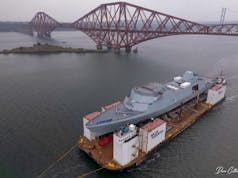

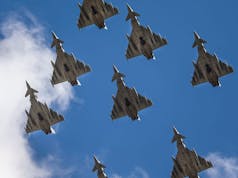
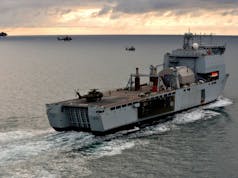


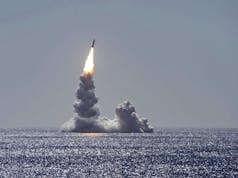

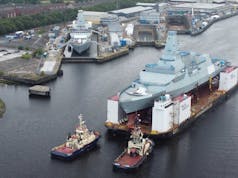


The English/western thinking countries have got to stick together. A large proportion of the world population would choose to live under a western style of government and laws than the other options available.
Have fun in oz. great deployment
“A large proportion of the world population would choose to live under a western style of government and laws than the other options available.” Capitalist democracy styles of Western governments can only thrive if they can exploit and extort weaker powers for thier own ends…so yeah China would take some convincing
Oh dear, another subject way past your knowledge and experience level.
So everyone wishes to live under Chinese one party system?
Always quick to say it’s all the west’s fault but provide no better solution.
I don’t believe current world democracies can only prosper by exploiting and extorting weaker people.
That sounds exactly what dictator countries do to weaker countries.
Hmmm…anyone willing to wager that Submarine Rotational Force-West based at HMAS Stirling “magically” transforms into FOB HMAS Stirling? Late 2030’s, almost guaranteed. RN and USN will be burrowing in for the long haul. 🤔😁
HMAS Stirling still a long way away from SE Asia Region. Need the other sub base on eastern seaboard too. Port Kembla touted but I don’t think any final decision yet. Still like to see a mixed sub fleet in the RAN so diesel subs can be used in/around NZ (and maybe co-crewed with NZ personnel?) and other countries that might not like SSN’s in their waters.
Still alot closer than Faslane and half the distance from Pearl, so reduce transit time to SCS area but far enough away to make counter strike only in realm of ballistic attack?
edit: just looked on google maps AUS east coast twice as far away!
You’d hope that deterrence would precede this possibility. And depending on your angle West/East coast might be relatively equidistant in access time to SCS. Having two nuclear sub bases will be very useful for the RAN and our partners. Still a bit of a wait for the first three Virginia’s. Hope they don’t slip otherwise the RAN might have to get some additional diesel subs.
Its uneconomic to have 2 sub bases for an economy the size of Australia and the size of SSN fleet. The maintenance and support difficulties as well as crewing dont bear thinking about.
The actual capabilities of an nuclear boat and its transit speeds dont make it especially relevant
If anything a forward base at Manus Island for ‘pit stops’ plus access to Guam is far better.
Another feature which probably hasnt been mentioned is roofed sub pens to foil satellite imagery. Is there a boat under cover or not or did it leave last night or a week ago. Submarines are ideal for this as the superstructure is not that large and the hull is of course mostly under water.
I see that light shelters for modern fighter jets separate to hangars have become ubiquitous- allows more outside servicing , protects from rain, sun etc and can hide from satellites too
Did Oz ever veto nuclear powered ships and boats from port visits?
No. Nuclear subs have been visiting Australian ports since the 1960s.
We have specific safety protocols to manage visits because they are routine.
The Kiwis on the other hand freak out about them. Even a visit by a conventionally powered RAN Collins class recently caused a stir in Auckland
I have a feeling the kiwis may change there minds if Chinese subs start popping up in New Zealand Waters.
Luckily they are far enough away that they have stayed out of trouble near there islands. So far
The Kiwis entire defence strategy (and hence defence spending) since WWII is predicated on exactly that – they are too far away from anywhere for a potential aggressor to bother so they don’t need to maintain high end defence capabilities (like fighter jets).
However Chinese ballistic missiles and other long range stand off weapons that can be delivered by air and sea have changed that equation not to mention that modern global media make it harder to hide from attention at the bottom of the world.
Interestingly there is a view amongst Kiwi defence planners that anyone seeking to invade NZ would have to come through Australia first. Hence their published defence strategies always mention contributing to the defence of Australia, though God knows with what – no fighter aircraft, just two combat frigates, no submarines, no MBTs or heavy artillery, – so maybe at best a battalion of troops or one or two extra P8s or C130s
Ironically, NZ would make an ideal base for an aggressor to blockade Australia’s eastern seaboard and cut off supply lines across the Pacific to the US and/or launch an assault against Australia’s largest population and industrial centres.
Much of your comments are WW2 thinking and forgetting the saying Dont fight the future war the same way as the previous one – forgetting too it was 70 years back. Its simply not possible anyway for a country to occupy NZ like it was 1940 all over again nor would China be interested in the slightest!
Geography always dictates a countrys military situation. Compare say Portugal and Cechia in Europe . Distance from Russia changes everything. Another example is Norway and Ireland- who isnt even in Nato
You are right about geography being a key determinant of defence strategy and posture and also about not fighting yesterday’s war.
That is precisely why China in the here and now is showing an increasing interest in the island nations of the SW Pacific that NZ regards as its ‘backyard’ and within its regional sphere of strategic influence.
China’s ‘String of Pearls’ strategy seeks to establish a series of facilities in Pacific Island nations which would ultimately offer them a similar potential for a blockade or military operations that they have created through the string of artificial island bases in the South China Sea.
China’s modus operandi is to operate in a grey area initially under the pretext of innocent civilian operations until they have established a military presence that can only be challenged through open conflict. You may have seen the staged photographs early on of civilian airliners and aircrew on the newly constructed runways in the SCS claiming the islands were being developed as tourist attractions as part of a disinformation campaign.
In 2022 China signed a security pact with Samoa that included Chinese presence on the island training and arming their police force. Chinese firms have built new port facilities in Tonga with wharves far bigger and shipping channels far deeper than needed for the local merchant ships but coincidently able to handle a full size aircraft carrier. They are building port facilities in three other SW Pacific locations including in Papua New Guinea just a couple of hundred kilometres from Australia.
Plus they are courting poor Pacific countries with the same low interest ‘bait and switch’ loans to build infrastructure (with an emphasis on ports and airports) that they used in Sri Lanka and Africa. Once the countries default on the loan payments the Chinese take ownership.
This has caused alarm in Canberra, Wellington and Washington and there is now a concerted diplomatic and military effort by all three countries to push back against China and engage with Pacific island nations.
The geographic scale of the Pacific means that warfare is fought over thousands rather than hundreds of kilometers (as in continental Europe) with a much greater emphasis on air and maritime operations than manoeuvre land warfare. So a base that is a thousand or so kilometres away is regarded as a nearby threat, particularly so with current long range weapons like cruise missiles.
The geography of the Pacific has not changed and is the most challenging environment for military operations and logistics even for a superpower like the USA.
That at least is one lesson than can be learned from WWII.
Yes, read accounts of prospective selection of an eastern seaboard submarine base earlier, but no recent updates.
Why no ‘Stars and Stripes’ flying?
Deem the SSNs to be the nose of the camel seeking entry into the tent.
errr OK. I guess that is American humour!
? Thought you were referring to future USAF base development in Oz. Evidently not…🤔
I was querying why the US sub was not flying the ‘Stars and Stripes’?
Excellent question. Ahhh…errr…humm…harrumph (and other throat clearing noises)…no clue.
🤔 Suspect a dastardly ChiCom plot to discredit US and AUKUS. 😉
Based upon a subsequent wiki query, learned that USN custom is to display a flag from stern flagstaff from 0800 local to sunset, while in port. Thus, most straightforward speculation may well be photo taken outside those hours. Or, that reasoning could be all wet (forgive the half-hearted pun, please). 😁
I would be willing to bet that (apart from a future conflict going ‘kinetic’ i.e. a real shooting war) it will remain (at least by name) a ‘rotational’ force.
Australians, both at a population and political level, have a sensitivity and aversion to permanent US bases on our territory- hence the ‘rotational’ euphemism.
Just look at the controversy over the Pine Gap satellite listening stations.
This is similar in many ways to the Kiwi’s sensitivity and resistance to nuclear port visits.
In Australia’s case it dates back to some conflict and animosity between Australian troops and the thousands of US servicemen based here in WWII (Google Battle of Brisbane) which is now permanently part of the Australian psyche
But permanent US basing would actually be counterproductive to the alliance as it encourages the host country to become militarily ‘lazy’ (the free rider problem) and dependent on foreign forces and would tend to lead to reduced defence spending and force readiness.
So no it ain’t going to happen in the way you suggest
Interesting reply, thanks. Private assessment of probability of conflict w/in Indo-Pacific theater, originating in SCS, by extrapolation of present trends (including continuation of current management of PRC), approaches 90+% by 2050.
However, previously unaware of significant strife w/in Oz involving US service personnel. Sobering reading.
Also why the US Marines in Darwin are described as a ‘rotational’ force despite specific infrastructure being built to accommodate them when they are in country and similarly the expanded facilities for B52s at RAAF Tindal will see the bombers rotated through rather than permanently based there.
Ground force rotations are typically up to 6 months while airforce deployments of B2s or B52s are a few weeks at a time.
They are most welcome by the military and the public when they are arrive, but for the reasons outlined, its also important that the public at least sees them leave as well.
Understood. Somewhat analogous to an extended holiday visit from the in-laws…😁
You need infrastructure (mission related and domestic accomodation) for rotational personnel.
I would add for the US military a permanent basing means bringing families and children over and creation of ‘little americas’ with schools and cultural institutions replicated in the bases.
Thats expensive , while a 6 month deployment is cheaper and involves less disruption to the soldier family, if they have them.
Im less worried about the so called ‘battles’ in cities between off duty soldiers in WW2. They happened in more than Australia and could be best described as after pub brawls, partly a result of early bar closing in most places. The sheer numbers of US troops at the time wont be replicated and of course for many they would leave the safe rear training areas for the actual front lines. I cant speak for what they thought but it could be a sort of live for the day
I’m sure that pub brawls were fairly common between rival services (even from the same country) during WWII given the immense stress that personnel about to face combat were under and in some ways may have been a positive as a pressure relief valve.
Although that said, the riots in Brisbane were on another scale. There is a fairly balanced Wikipedia article on the Battle of Brisbane which provides a good background on the animosity that sparked the riots.
To some extent the paternalistic attitude of the Americans towards Australia at the time still prevails in the modern day. Like the UK’s ‘special relationship’ with the the US as a superpower, Australia’s relationship is also complex and rooted in a shared history that dates back to WWII.
Understanding and managing the nuances of global politics on all sides is critical to making an alliance work.